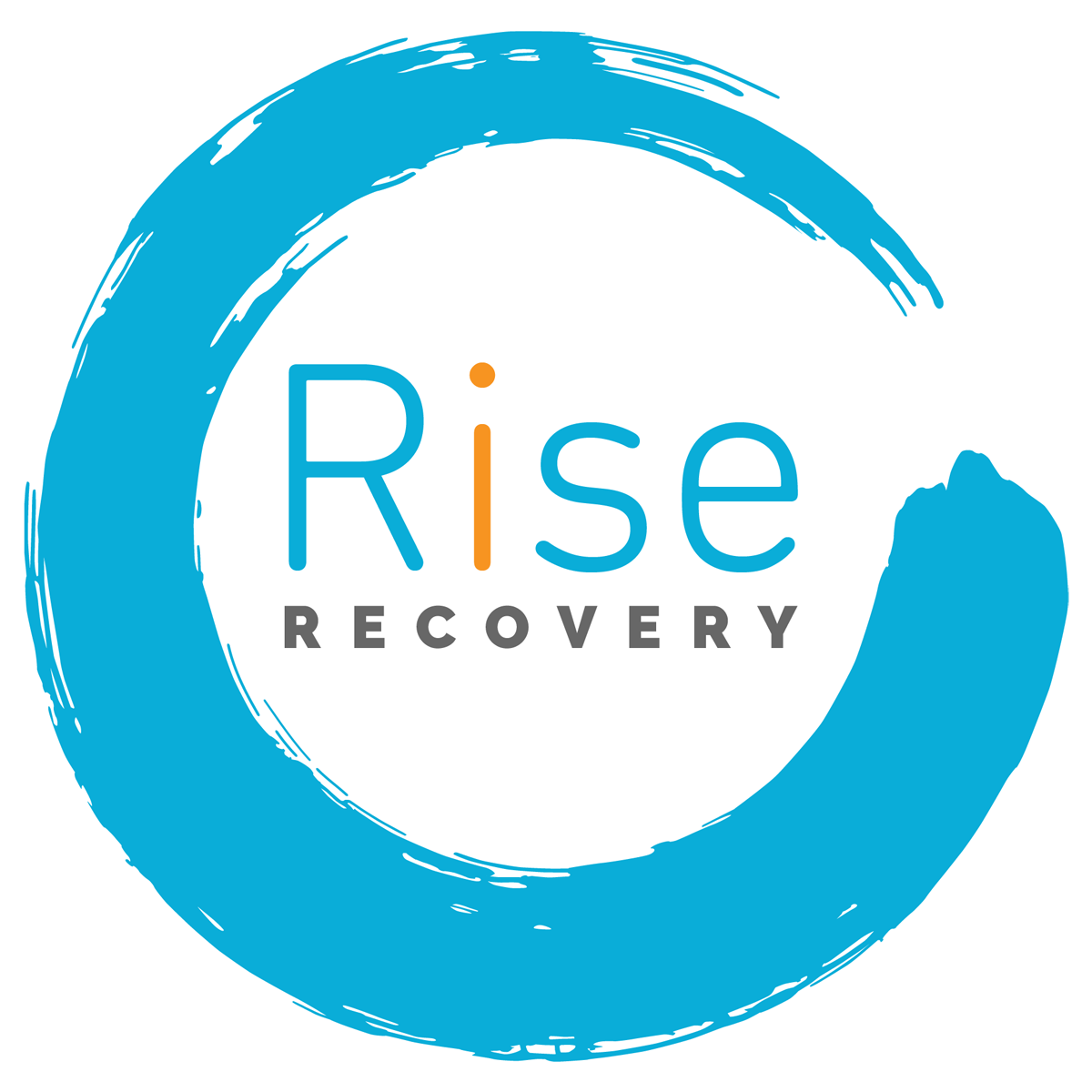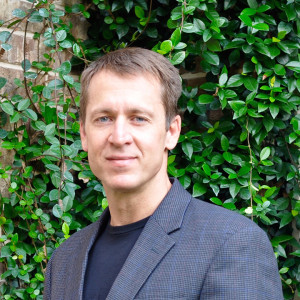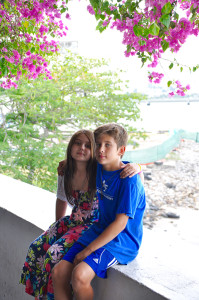
By John Casey
When we think about what is important in life, we will conclude more often than not that the most meaningful goal is to be happy. And we think about what it is that might get us there, whether in the short-term or long-term, and various things cross our mind—a nice house, a good job, a new car or for the moment, a big, decadent slice of chocolate cake. And they do make us happy! But then we admit to ourselves that these things are subject to a law of diminishing returns. Some of us try to take care of that by having more cake. Sometimes shopping more frequently seems to give us a boost. There are those of us who turn occasionally to alcohol, or prescription drugs, or even illegal drugs—others rely too heavily on these things. The majority of us do our best to manage our lives in a way that is mostly positive, and to do the things we think will provide us longer-term happiness. And we believe, for the most part, the things that will keep us happy are good things—friendships, a stable family, healthy living. And we are right! Those are virtuous and productive parts of life that, combined with our occasional indulgences, provide a spectrum of happiness that overlaps and should keep us generally content. Except it doesn’t always happen that way. If this is our recipe for a full and satisfying life, some of us will succeed. However, most of us will probably fall short of our expectations, and some will fall much farther.
For those of us who are falling short, what then, do we need to add to our recipe? Our intent is to gain a basic understanding of how to lead a more satisfying and happy life, and the answers are all around us, but we often have trouble prioritizing them. We need to keep it simple and focus on just a few things—the most important ingredients. That being said, the recipe for happiness is not quite the same for each of us. People are different, physically and mentally. Depending on who we are, and what our background is, we will require varying amounts of each ingredient to succeed. But the good news is, the ingredients themselves are the same for everyone.
There are those who seem to be happy most of the time, regardless of what happens. Some are prone more than most to anger, dissatisfaction and irritability. Others have had to deal with traumatic events early in life, with few options for help, and are way behind the curve. Some people are genetically predispositioned to be less happy. Yes, they were born that way! And then there is everyone else. In addition to our upbringing and environment, our general state of happiness is directly related to how much dopamine our midbrain releases in everyday situations. Dopamine is a chemical that makes us feel happy, and is released in varying amounts, depending on how “good” the mid-brain estimates our life events are. With this action the brain rewards us for being in situations it determines are beneficial to our survival, and the amount of dopamine released is regulated on a scale that is genetic. So a smile from a friend may make one person 39 percent happy, where in the same situation, with the same smile from the same friend under the same conditions, another person may only feel 25 percent happy. There are other things that release dopamine in the brain as well—sex, sustained exercise, certain foods (cake!), caffeine (a drug), nicotine (a drug), certain prescription and illegal drugs, and alcohol (a drug). While some of these things, in moderation, provide us with healthy doses of short-term happiness, too much of any of them might indicate a misguided search for happiness, or lead to addiction.
The good news is, everyone has the capacity to be happier without over-indulging in anything, and in most cases, we have the ability to become much happier. We just have to work at it. But we have to be careful about how we focus our efforts. When we say we want to be happy, there is a tendency to focus on receiving happiness—“what” or “who will make us happy,” instead of “what can we do to be happy,” and even more important, “what can we do to make others happy.” When we remove ourselves from the focus of our goal, and instead center on the happiness and welfare of others, we begin to find that true, enduring, and productive happiness is a natural byproduct—for others and for ourselves. This is one of the main ingredients in our recipe for a happy life, which I will call our Soulution.
Knowing what the ingredients are only gets us partway there, though. We still have to be able to put it all together, and we have two simple, yet profound answers to help with that, each of which responds to an ages-old, “unanswerable” question. Even as unanswerable as they may seem, we continually search for some complicated, metaphysical epiphany, that blinding light “aha moment” to resolve them—especially when things look bleak, or when our lives are at a crossroads. The questions are similar, but different enough that answers for both are required. And the answers are simple!
The first question is: What is the meaning of life?
The second is: What is the key to happiness?
We can answer the first question in just two words: To Live. Let’s think about this realistically. If we are constantly searching for meaning in our life, we aren’t leaving ourselves much time to reflect on, experience, interact with, and live in the here and now. The meaning of life is to watch a sunrise, go for a run, build something grand, have a family, and teach our children how to do it all. What does it mean to live? “To live” defines itself. When we are mentally absent from the present much of the time due to our preoccupation with what life should have been, or what life is supposed to be, we leave a void of inaction in the present that extrapolates, quite possibly, into an unhappy legacy that falls far short of our abilities and expectations. We quite literally become physically absent from our own life. This then leads tragically to a circular dependency on the aforementioned preoccupation.

In the same vein, the key to happiness is: To Be Happy. The significant similarity of this answer with the previous is that both contain action verbs—“to live” and “to be.” We cannot live without eating, thinking, moving, working, or interacting. Likewise, we cannot be happy without doing these and other things, like loving, sharing, helping others and improving ourselves. We sometimes confuse the underlying meaning of these verbs by relegating them to passive status. We equate happiness and life with conditions of existence. In other words, we approximate “to be” and “to live” with “to exist.” When this happens it becomes difficult to answer our two questions, because the resolution is now dependent on our environment. It moves away from us, and instead to other people, to the world, to the universe. Once we’ve expanded our “Soulution set” to include the entire universe, it becomes quite complicated and ultimately, impossible to achieve.
Bobby McFerrin seemed to understand this when he wrote Don’t worry, be happy. I love this song. Most people do because it’s catchy and simple, and represents an ideal we’d like to be able to incorporate into our daily lives. Just be happy. And who wouldn’t like to leave all their worry behind? Except that worry can’t really be left behind. It can, however, be mitigated or prevented—which requires action. One of the most effective things we can do is to recognize that worrying about things we cannot control (such as the past) is fruitless. Correspondingly, in his Odes from 23 BC, the Roman poet Horace wrote “carpe diem, quam minimum credula postero,” which translates to “Seize the day, put very little trust in tomorrow.” His point was that instead of worrying about tomorrow, one must take action for the future in the present—not necessarily the meaning we ascribe to the better-known, shortened version, carpe diem, which we take to mean seize the day or live for today… What Horace meant was our actions in the present must be purposeful. Let’s put Bob and Horace’s ideas together with our answers to the Meaning of Life and the Key to Happiness, because they are all part of our simple Soulution:
Live Purposefully and Be Happy!
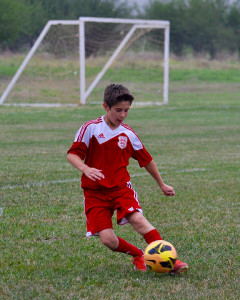
To live and to be happy require action—we need to do these things—they are not done to us. We may recognize that we have experiences or interactions that improve our lives, and that certainly do make us happy, and there is no visible connection between our own actions and these situations. In other words, they appear to happen to us. The truth is, everything we do and say in life, and how we think leads us, inexorably, to these moments. The more consistently positive we are, the more productive action exhibited on our part, the more we find ourselves receiving the benefits of happiness that are seemingly unrelated. Seemingly.
Does this appear too simple? Well, it is and it isn’t. It’s relatively easy to be positive, nice, and productive when the conditions are favorable. When we are challenged, stress can make these required actions seem almost impossible. And again, we tend to spend much of our time reflecting on the past, planning for the future, and searching for meaning. But what if there were no past, and no such thing as the future? We’d be logically driven to cease much of this wasteful behavior, leaving more time to address those challenges and reduce our stress, right? In the book Zen and the Art of Happiness by Chris Prentiss, we are introduced to a concept that helps us realize this. Paraphrasing his point: There is no such thing as the past, and there is no such thing as the future—there is only the present. Think about it. Pick a time from yesterday—any time. At that exact time yesterday, it was the present. As you read this sentence, it is the present right now. And at noon tomorrow, when noon tomorrow comes, it will be the present then. It is always the present. Always. When we focus on doing the right thing, right now, all the time, we begin to see a past unfold that looks quite attractive—a past we are proud of and happy about. And we come to realize that this trend will more than likely continue into the future so long as we stick to this plan. The only thing that exists is right now. This is where life happens. Right now. All the time.
So let’s add Chris’ concept, which provides a little more depth to Horace’s carpe diem, to our Soulution:
Live Purposefully and Be Happy Right Now!
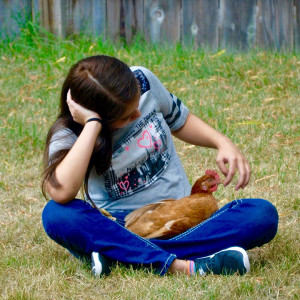
Hopefully everything we’ve looked at so far about how to be happier makes sense. As was mentioned at the beginning though, some people find themselves in such a negative place that “Live Purposefully and Be Happy Right Now” is simply a bridge too far—they do not currently have the capacity, or they are trapped in a situation or environment that prevents them from being able to do this. Those suffering from the terrible effects of addiction or alcoholism, and people with certain other mental illnesses often cannot recover (and be happy) without the help of others. They are conditions sometimes established and often perpetuated by a perceived inability to be happy, and/or a misguided search for happiness. Unfortunately, helping people with these diseases can seem difficult, thankless, and oftentimes hopeless. The reality is that if people with these mental illnesses are helped in an empathetic manner, they can learn that there are healthy, positive, and enduring ways to add meaning to their lives, ways for them to work toward and build happiness, and they can recover. Empathy is important here, because it demonstrates that we understand. If we understand, then our help becomes genuine, and is more likely to be embraced. If we do not understand, if we lack empathy, our help can be perceived as superficial or “clinical,” and may not be readily accepted. You may be asking, how can I be empathetic when I don’t have those problems? Consider that you do. It may only be at a fraction of the level of some, or maybe more than that and you keep telling yourself that “it’s not that bad…” The truth is, every person in the world is at least a little bit nuts! If we weren’t, we’d be mentally perfect, and I haven’t met that person yet. So yes—we can relate, we can be empathetic. We just have to be honest with ourselves first, and yes, (again!) work at it. The good news is, a very significant ingredient in our Soulution for improving our own happiness is helping others, because it is in helping others that we create and build positive, enduring relationships with other people, which I believe constitute the very essence of spirituality.
When we consider the word “spiritual,” religion, faith, and God come to mind. But being spiritual is not the same as being religious, or believing in God. There are many, many definitions for spirituality, and they vary depending on the source. When it comes right down to it though, they generally share two common characteristics—improvement and understanding of self, and with that knowledge in hand, achieving a deeper understanding of our environment and of our place in it. Given the most important part of our environment is the human community, I choose to define spirituality as: A state of continuous personal growth achieved in harmony with others. We can simplify this further by saying: A state of becoming better people. Using this definition, we cannot realize our true potential for personal growth unless we are influencing others, either directly or indirectly, to grow as well. It follows that spirituality requires we strive to be empathetic, and to be cognizant of the needs and value of others. A religion, on the other hand, is a framework of codified beliefs and tenets that by their very nature require us to have faith in the existence and power of God, gods, or a higher power of some kind. And the tenets and beliefs of every statistically relevant religion in the world have essentially the same goal in mind for all of us—to be better people. Notice that we are not saying “good people.” To be “better” implies we can always improve ourselves. To be “good” leaves us with the idea that there is a “self-improvement destination” somewhere along the way, a finish line, when there isn’t one. Our goal is continuous improvement. Together. Religion provides a path for us to become spiritual.
When we believe in God or a higher power, we are admitting we are not the center of the universe. What about other people? Do we measure our worth against others? Yes, we do from time to time. But are we better than them? How do we really know? What is our measuring stick? What do I have to measure others against if not myself? If we are caught up in these kinds of sticky questions, we’ve become confused about what being better or spiritual really means. To be better people, we must first direct our attention inward and understand ourselves.
When we understand and honestly embrace who we are, what we are capable of, what we can control, and what we cannot, we are now equipped to make personal decisions where the determining factors are driven more by self-care (making sure we have everything we need) and less by selfishness (making sure we have everything). We begin to judge others less often or as quickly, and are more open to their thoughts and ideas. We become less prone to ignorant or bellicose behavior, and it becomes easier for us to get along with everyone around us. All of this, in turn, opens our minds and hearts to positive opportunities and healthy relationships that had been, until now, hidden in plain sight. The net (and continual) result is increased happiness. We have come to believe in something greater than our individual selves—and we’re becoming better, spiritual people—something we could not do alone. And before we begin, we have to accept it is all true whether we have proof or not. This is faith, and it is part of our Soulution.
Have Faith, Live Purposefully and Be Happy Right Now!
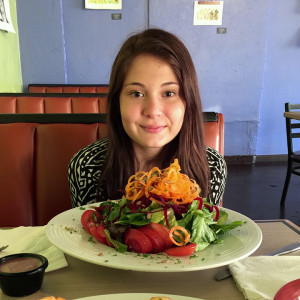
In the 2011 movie Happy, leading scientists take us on a journey in search of what makes people happy. In the documentary, researchers conclude that 50 percent of a human’s capacity to be happy is genetic, and roughly 10 percent is related to our ability to properly clothe, feed, and shelter ourselves. Twenty or so percent is dependent on our health and physical fitness and activity, and the rest is based on the level and quality of our human interaction. So half of our capacity to be happy is more or less dependent on us, and how we choose to live our lives! And with 20 percent directly influenced by what we ingest (or choose not to), combined with how fit we decide to be, we can go a long way toward increasing happiness right off the bat by being committed to eating right and exercising regularly. Further, when we exercise we should be doing something we enjoy—it shouldn’t feel like a chore. The goal with exercise should be to do it long enough each time for our brain to release endorphins and dopamine. Endorphins are released when our brain decides we are going to continue to stress our bodies despite how difficult it may be, and it does this because it has determined that we need to keep going. The word “endorphin” is derived from two other words, “endogenous” and “morphine.” Yes, morphine. Endogenous means “made within the body.” They are opioid neuropeptides that inhibit pain, which allows us to exercise longer. Combined with dopamine release, they also provide a sensation of euphoria. These effects bolster our ability and desire to keep going. It is when we reach this state that our scientists from the documentary say we are “in a zone.” Our exercise goals should always include finding that zone. When we find it, our other health and fitness goals, like losing weight, fall right in line. And it needs to be a regimen—a routine, as the happiness we achieve from fitness and being in the zone is transitory—it gradually subsides over the course of the day. By keeping to a regular exercise schedule, we are more likely to maintain healthy eating habits because we see results faster, and we realize we can really do it. We begin to feel better about our appearance, and we sleep better. All of which makes us happier. Which makes health and fitness part of our Soulution:
Have Faith, Live Purposefully, Be Fit and Healthy, and Be Happy Right Now!
Staying with the documentary, the last 20 percent of our capacity is the most important, because it represents the most pervasive (longest-lasting) potential happiness portion of the 50 percent that is not genetic—the portion over which we have control. As we discussed, much of what makes us happy, like exercise, tends to be transitory or situation-dependent. So which situations or conditions under our control provide long-lasting happiness? The scientists in the film were able to show that humans are most happy when they are giving of themselves—when they help other people—unconditionally (these results are borne out in other scientific studies) – with no thought of personal gain. As we discussed earlier, this type of behavior improves our ability to create and sustain positive, enduring relationships—the essence of spirituality, and a gift that keeps on giving. So those of us who already have the capacity to improve our lives and our happiness can do so most significantly by helping those who don’t yet have that capacity! How wonderfully, symbiotically perfect!

Most people recognize there is personal and societal value in helping others. What many do not realize is how powerful this type of human interaction can be. The product of this effort is personal growth and happiness for both the person helped and the helper. It even provides happiness vicariously to people nearby who may only be watching, or hearing about it. And it can then be a catalyst of change for those who witness these actions and their positive results, leading to their desire to contribute to the cause. It’s catchy. When this happens enough, an entire community can evolve.
I’ve had the wonderful opportunity for a few years now to work with an organization that specializes in helping others—Rise Recovery. Rise is a nonprofit based in San Antonio, Texas that provides free counseling, support groups, workshops, and activities to help teenagers and young adults recover from drug and alcohol addiction. With the help they receive they then go on to lead productive and fulfilling lives. And we include their families and loved ones, because these close relationships form the core of their support group as they grow in their recovery. Last year we were able to help 3,148 people. You won’t find a more dedicated, charitable, gracious, effective, and happy group of people than the staff and Board Members at Rise Recovery! They understand what I’m talking about.
So the final ingredient is helping others, unconditionally. And we complete the recipe for a happier life by suggesting we teach our Soulution to others, and work on it together (spiritually!):
Let’s Have Faith, Live Purposefully, Be Fit and Healthy, and Be Happy Right Now!
That’s it then, right? The meaning of life, the key to happiness, Zen, zone, Bobby McFerrin, carpe diem, faith, etcetera, all wrapped up and distilled into a simple, awkward imperative? Well, yes. It’s not magic, just a few things I’ve learned, some things I’ve experienced, things I believe, and a song I heard. What’s relevant is, I’ve incorporated these ideas into my life, and I can tell you they work! And I’ve seen them work for many, many others. In order for these ideas to work for you, we have to work at it, and it has to become routine—a way of life.
Casey’s Recommended Reading:
Blink, The Power of Thinking Without Thinking, by Malcolm Gladwell, 2007
Mindsight: The New Science of Personal Transformation, by Daniel J. Siegel, M.D., 2011
When the Servant Becomes the Master, by Jason Z.W. Powers, M.D., 2012
Zen and the Art of Happiness, by Chris Prentiss, 2006
Casey’s Recommended Viewing:
Happy, Wadi Rum Films, Inc., 2011
Hector and the Search for Happiness, Relativity Media, LLC, 2014
Groundhog Day, Columbia Pictures, 1993
John Casey currently serves as Program Director for Xerox Corporation Government Healthcare Solutions and Board Member/Public Relations Chairman for Rise Recovery.
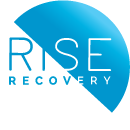 To learn more about Rise Recovery or invest in our mission, please enjoy the rest of our website or visit our donation page. For more information or to contact Rise Recovery, call 210-227-2634.
To learn more about Rise Recovery or invest in our mission, please enjoy the rest of our website or visit our donation page. For more information or to contact Rise Recovery, call 210-227-2634.



